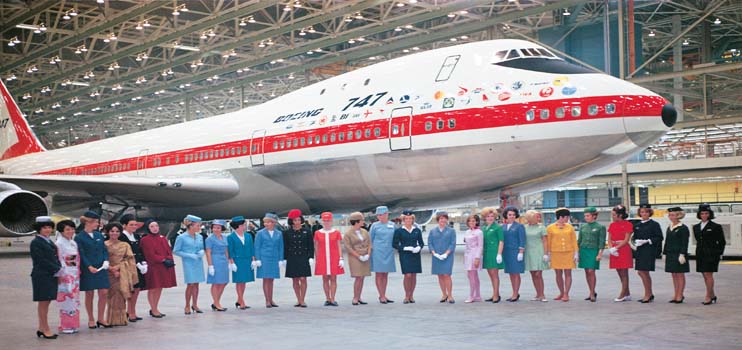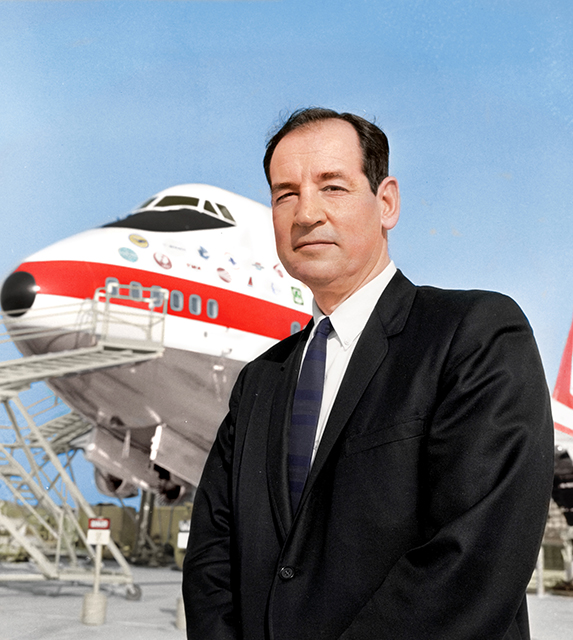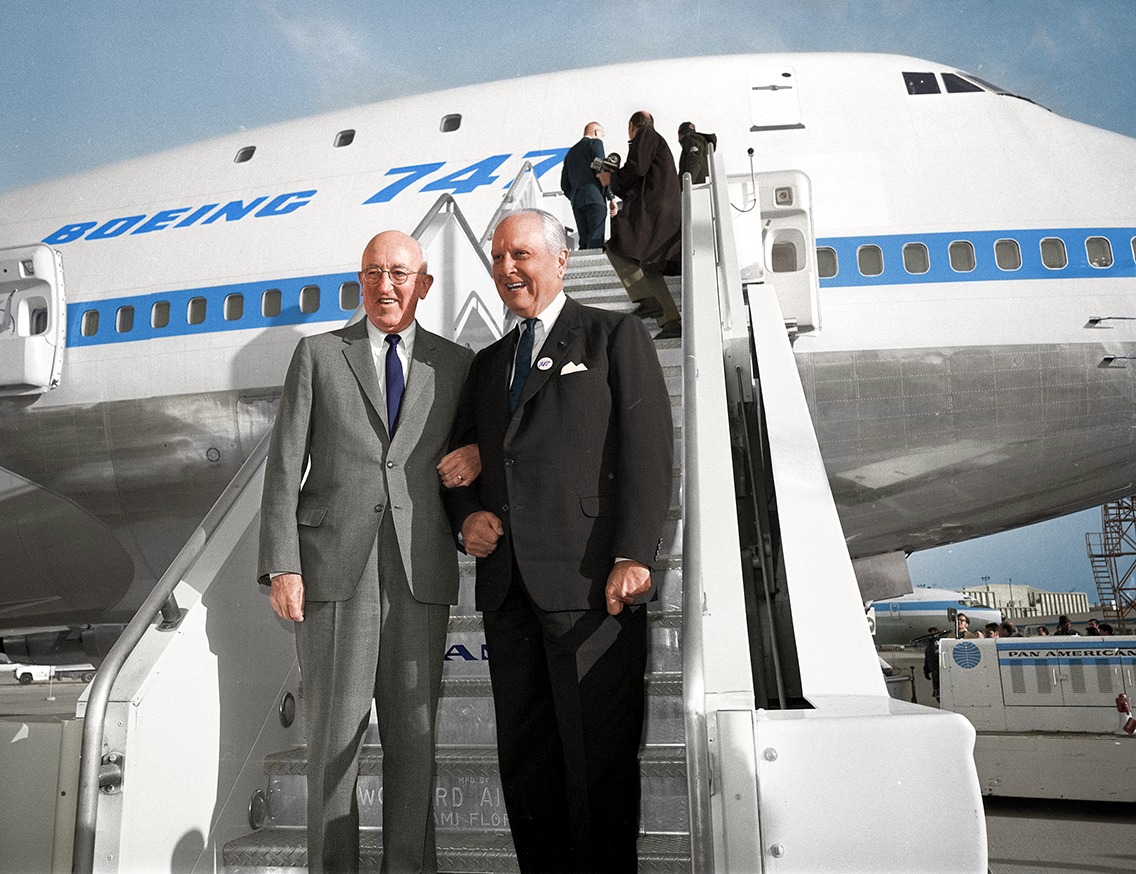The 747, Queen Of The Skies, turns 50
24 September, 2018
6 min read
By joining our newsletter, you agree to our Privacy Policy


Fifty years ago this week on September 30, 1968, the Queen of the Skies that made travel affordable for all, the Boeing 747, rolled out into the Seattle sunshine.
But its birth was to bring dark clouds to the leaders in commercial aviation at the time and almost bankrupted all three.
SEE our video "Dispelling the myths about flying."Ironically, the 747 wasn’t supposed to carry passengers for very many years as the world looked to supersonic travel with the Boeing SST and the Concorde.
Boeing has now sold 1,568 747s and it’s still in production with the latest model still turning heads.

But giving life to the aircraft that changed the world was a challenge that brought the world’s largest aerospace company, Boeing, the then biggest engine builder Pratt, and Whitney and the legendary Pan Am to their knees.
READ: New interior images of the 777X show a new level of comfortIn the late 60s, Boeing’s resources were stretched to the absolute limit as its engineers grappled with the complexities of its US government sponsored 2707 supersonic transport, which was eventually scrapped by Congress on May 20, 1971, despite commitments for 115 from 25 airlines.
At the time the 747 was considered only an interim solution before the world’s air routes were taken over by supersonics but fortunately, Boeing had appointed Joe Sutter, a brilliant young designer, to the project and he was to father the classic of the jet age.

Mr. Sutter was extremely modest on this role.
“I was the only qualified person available. All the smart guys, Maynard Pennell, Bill Cook, Bob Withington, and many others were tied up on the SST, while Jack Steiner was heading the 737 programs,” Mr. Sutter said in a 2009 interview with the author.
The 747 was designed at the outset to be a freighter as everyone thought the 747 would be relegated to cargo routes.
“That’s what Boeing’s marketing people thought; they estimated we’d probably sell 50 or so 747s for passenger use,” said Mr. Sutter.
The 747 was a mass travel dream of Pan American World Airways founder Juan Trippe and Boeing chief Bill Allen.

Mr Trippe had started mass travel in 1948 when he introduced economy class onto 70 seat DC-4s.
But the 747 was far, far bigger. It would carry over 350 – almost double the Boeing 707 – and would slash fares.
It is impossible to find anyone who recalls if there was a definitive business plan for the 747. But traffic was booming for the airline industry which had enjoyed growth of 15 percent a year through the early 1960s as passengers flocked to jet aircraft.
Mr. Trippe was a man on a mission.
He wanted to make travel affordable for everyone and he believed that the 747 with the new high bypass turbofan engine could do just that.
Pan Am ordered 25 but most airlines were terrified of the jumbo’s size. Qantas ordered 4, British Airways 6, while many airlines just ordered 2 or 3 just to stay in the jumbo race.

However, the trickle of orders wasn’t the major problem it was the 747’s weight.
Initially, it was to weigh 250,000kg but this leaped to 322,000kgs by the time it flew because of design changes impacting range, altitude, speed, and fuel burn. A solution, to run the engines at higher temperatures to give more thrust, was found and within six months of entering service, the jumbo was performing at acceptable levels.
Despite the many problems encountered in its manufacture, the birth of the 747 was an amazing feat. Pan Am took delivery of its first aircraft just 3-and-a-half years after its order was placed and that included a 10-month flight-test program.
Because the 747 was so big airlines splashed out with lounges. There was the upper deck lounge and many had lounges at the back of economy class. However a Boeing proposal for a lower deck lounge – called the Tiger Lounge, because of the fabric design used in the mock-up never made it.

The spacious age, however, was short-lived with airlines responding to a demand for cheaper and cheaper travel in the late 1970s by adding more seats.
There have been many variants of the superjet. The upper deck was stretched for the -300 model and a modified wing and bigger engines added for the longer range -400 version. The 747 was also shrunk for the SP (Special Performance) model that was the first aircraft to be able to cross the South Pacific from the US to Australia non-stop. Finally, the 747 itself was stretched to create the 747-8, which features wing changes and 787 engines. Today the 747 is still the Queen of the Skies to many and for billions of passengers, it is the plane that enabled them to see the world. Tomorrow AirlineRatings.com looks at the Boeing's jumbo kingdom.Get the latest news and updates straight to your inbox
No spam, no hassle, no fuss, just airline news direct to you.
By joining our newsletter, you agree to our Privacy Policy
Find us on social media
Comments
No comments yet, be the first to write one.


